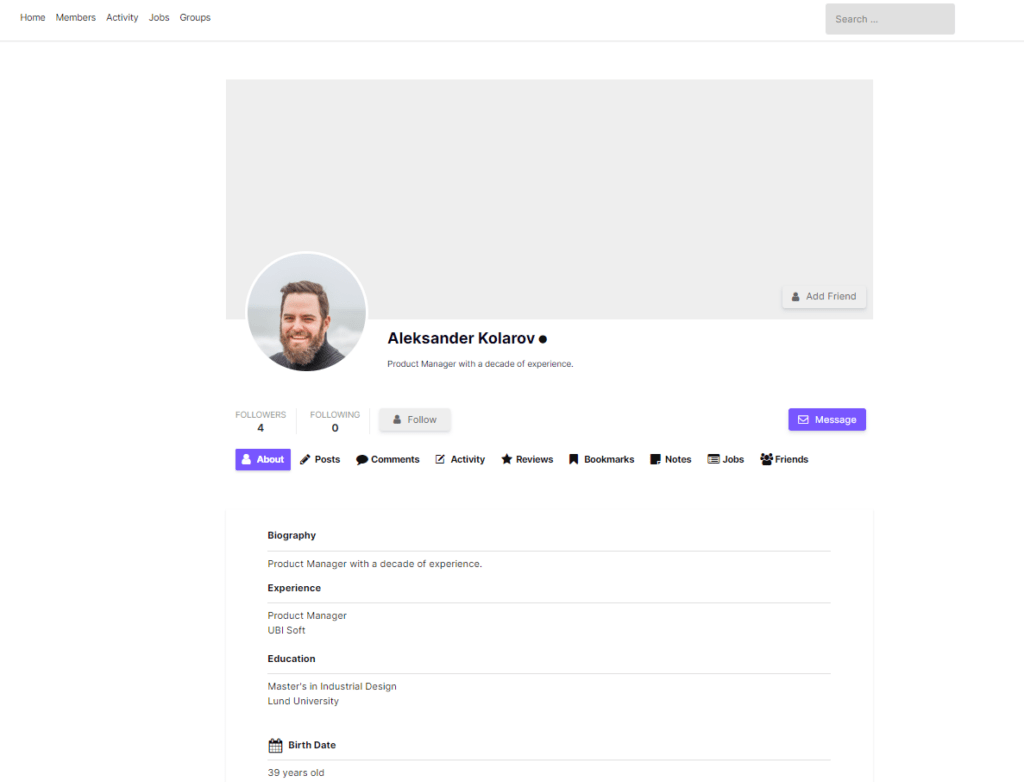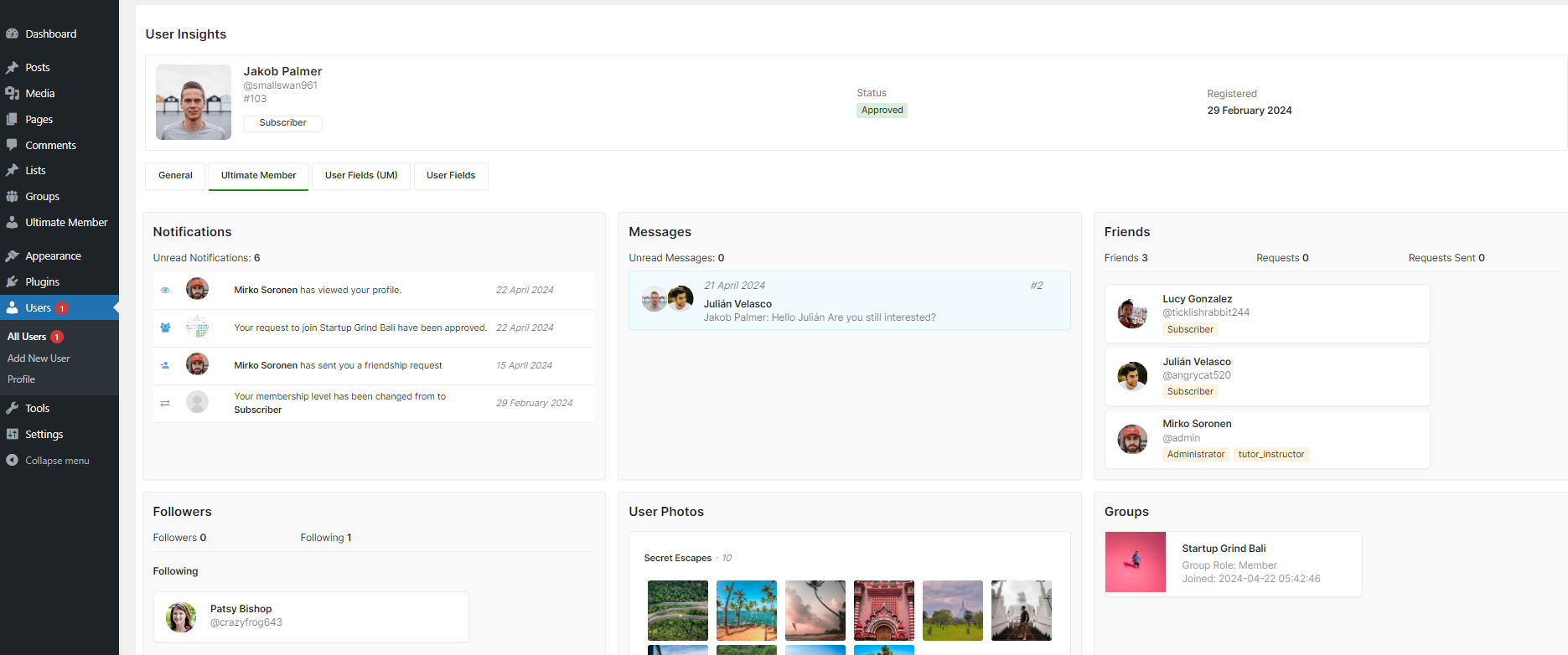Creating a searchable, sortable, and filterable user directory is one of the most requested features for community or membership sites. Whether you’re building a job board, alumni network, or internal admin panel, displaying Ultimate Member users in a dynamic table using Elementor gives you both flexibility and control.
In this guide, you’ll learn how to create a dynamic Ultimate Member user table with sorting, pagination, and real-time AJAX filtering, all while boosting your site’s SEO with structured, crawlable content.
See the final result: (Live Demo)
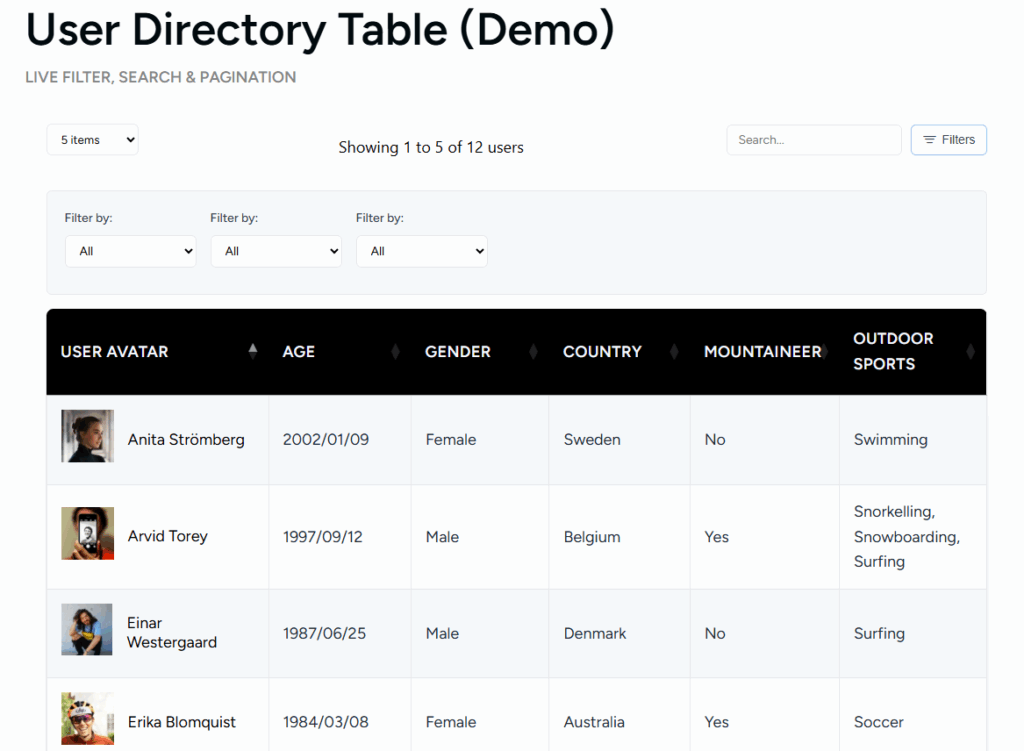
Why Tables Work for Directories
Displaying users in a table format improves usability when your audience needs to scan, compare, or search for people based on specific data points. Whether it’s location, registration date, or a custom field like “Skill Level,” tables support powerful interactions, such as sorting and filtering. They’re ideal for:
- Member directories
- Job seeker databases
- Freelancer or alumni listings
- Admin interfaces
Tables also help with SEO by organizing user data in a crawlable format, making your directory easier to index and rank on Google.
What Will We Be Building?
You’ll create a dynamic user directory table that displays a list of 20+ users. Each row will represent a user, and each column will show specific meta fields such as:
- Gender
- Country
- Registration Date
The table will support:
- Sortable columns (e.g., sort by name or join date)
- AJAX-based filters using user meta fields (e.g., filter users with Gender = Male)
- Live search and pagination
This setup is perfect for building a fast, responsive, and user-friendly directory using Ultimate Member and Elementor.
Why Display Ultimate Member Users in a Table?
Tables are ideal when you need to scan, sort, and compare multiple user profiles efficiently. For sites with large user bases or data-rich profiles, like directories, communities, admin panels, or job boards, a table layout.
- Makes information dense but easy to digest
- Enables power features like AJAX filtering, live search, and pagination
- Improves SEO with structured, crawlable content
- Helps users find the right person fast using roles, meta fields, or custom tags
A searchable, sortable table is best when functionality and precision matter. On the other hand, a card layout suits visually driven platforms where browsing is more casual and aesthetic-focused.
Card vs Table View: When and Why
Choosing between card and table layouts depends on your goals and audience:
Use Card Layout When:
- Visual scanning is important
- Data density is moderate
- The user count is small to moderate
Use Cases: Dating sites, creator portfolios, influencer directories, team pages, and testimonial grids
Use a User Table When:
- Sorting and filtering are important
- Scanning efficiency matters
- Information density is high
- The user base is medium to large (50+)
Use Cases: Freelance marketplaces, alumni directories, admin user panels, job seeker lists
Prerequisites: Plugins and User Meta Setup
To create a filterable user directory using WordPress, you will need the following plugins installed:
- WordPress CMS – For creating the website
- Ultimate Member (Free or Pro) – User registration, profiles, and meta fields.
- Elementor (Free or Pro) – Page builder for frontend customization
- Elementor Widgets for Ultimate Member (Pro) – The Free version offers only Grid; for the Table Widget, install the Pro version. Adds user directory widgets for Elementor.
Ultimate Member Custom Fields Setup
- Go to Ultimate Member → Forms → Edit Profile Form
- Add fields like: Gender, Country, Skills, etc.
Note their meta key names (e.g., gender, country) as you’ll use them in the table.
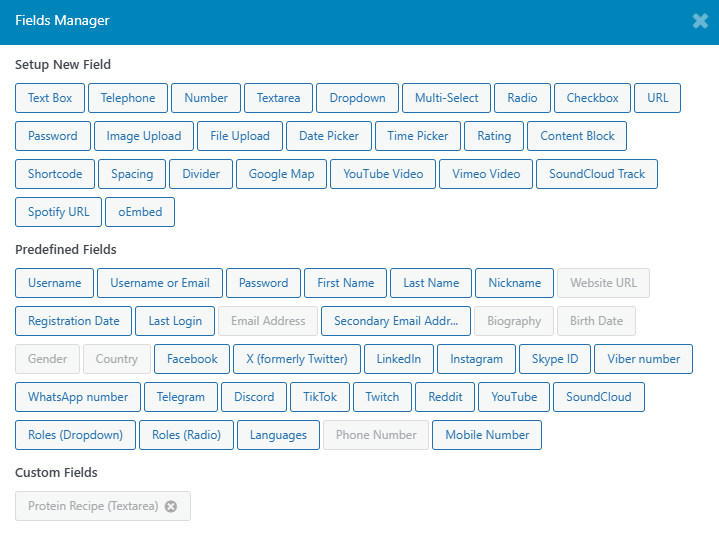
Step-by-Step Tutorial: Creating Your Ultimate Member User Table
Step 1: Create Your User Directory Page
- Go to WordPress Dashboard > Pages > Add Page
- Add a Title like “Member Directory.”
- Click on Publish
- Click Edit with Elementor

Step 2: Add the Ultimate Member User Table Widget
- Click on + to add a widget
- Search for “User Directory Table” in the widgets panel
- Click on “User Directory Table” and drag it to Elementor Canvas
Ensure the User Directory & Profile Grid for Elementor & Ultimate Member is active; otherwise, the widget won’t appear.
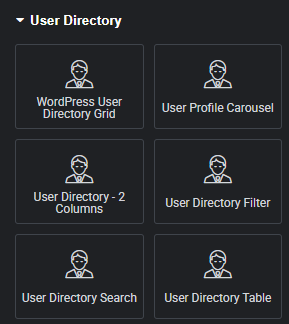
Step 3: Configure Meta Fields for Table Columns
- Select the widget → go to Table Layout tab
- Click Add Item for each column you want:
- Example: Name, Gender, Country, Email, Registration Date
- Choose the Meta Key matching your UM field (e.g., gender)
- Drag and drop to reorder columns
💡 Pro Tip: Use field labels that make sense for users (“Joined On” instead of “user_registered”).
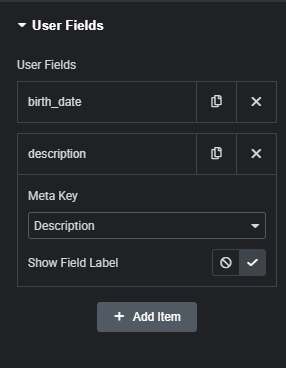
Step 4: Enable AJAX Filtering for Ultimate Member User Table
- Go to the Live Filtering tab
- Click Add Item
- Select the Meta Key you want to filter by (e.g., gender)
- Choose the appropriate field type: dropdown, text input, etc.
- Example: Filter users who have gender = Male.
- Go to the Table Interaction tab
- Enable Interactive Sorting
This lets users narrow down the list based on custom fields like gender, country, or role.
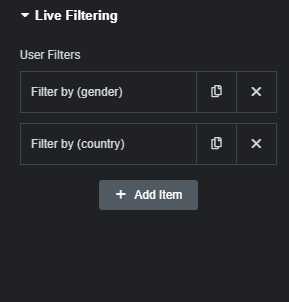
Step 5: Configure Sorting and Pagination
Enable Sorting
- Go to the Table Interaction tab
- Toggle Interactive Sorting ON
- Users can now click on column headers to sort (e.g., A–Z by Country)
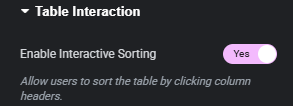
Setup Pagination
- Set Users Per Page to 10-20 (optimal for loading speed)
- In User Query Settings, set Maximum Users to 100+
- This creates pagination controls for large directories
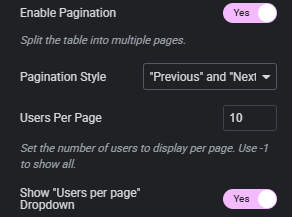
Creating a powerful Ultimate Member user table transforms your WordPress site into a professional directory platform. With AJAX filtering, sorting, and responsive design, you’re giving users the tools they need to quickly find and connect with the right people.
Frequently Asked Questions (FAQ)
Why are no users showing in the table?
Check two key things:
- The User Query Settings ensure “Maximum Users to Display” is not set to 0.
- Make sure the correct user roles are selected if you’re filtering by role. Also, confirm the users actually exist with the specified role or meta field.
Why isn’t sorting working on my table columns?
Go to the Table Interaction tab and make sure “Interactive Sorting” is turned on. Without this setting enabled, the column headers won’t be clickable.
Why aren’t my filter fields showing up?
Make sure the meta key used in the filter exactly matches the one defined in your Ultimate Member profile form. Even a small mismatch (like Gender vs gender) will prevent it from working.
Why can’t I see the User Directory Table widget in Elementor?
First, confirm that the “User Directory & Profile Grid for Elementor & Ultimate Member” plugin is installed and active. If it’s active but the widget still doesn’t appear, try:
- Clearing your browser and site cache
- Disabling any conflicting optimization plugins
- Refreshing the Elementor editor

